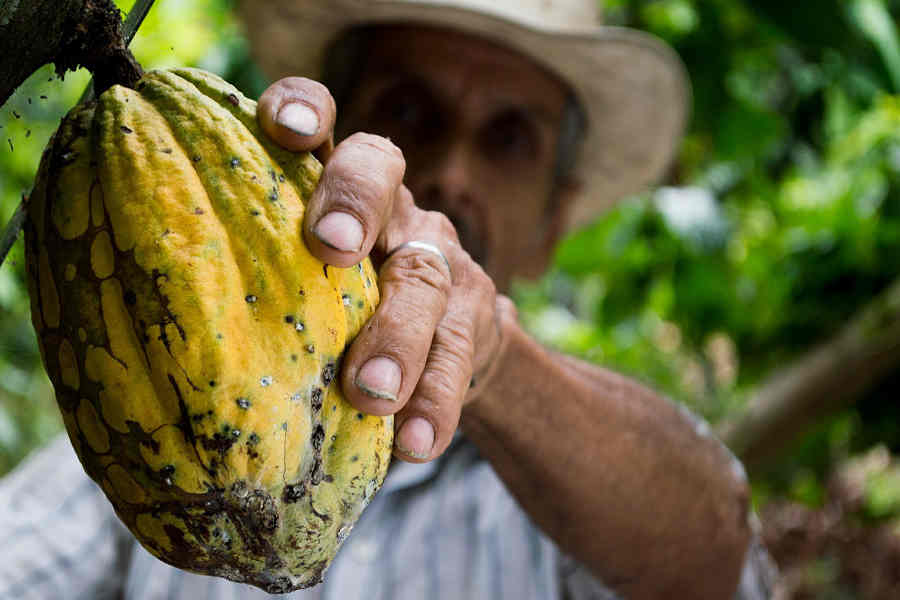Ingredient 101: Cacao
Australian cacao production is still in
relative infancy, but unless you’ve been lucky enough to have lived an unplugged outback experience for the last decade, you’ll be familiar with the sticky, circulating trend for cacao -
over mere cocoa - amongst our home-grown food blogging coterie.
And if you’d thought cacao was simply an exotic name for cocoa, perhaps you’ve even guilefully substituted one for the other…they do look virtually indistinguishable after all.

Cacao vs Cocoa: What's the difference?
Just in case you were wondering though, yes there is a difference. Whether or not you’d choose to use each independently when called for however, hinges on how much motivators like price tags, health claims and plain old flavour fundamentalism affect you.
Bean beginnings
Both cacao and cocoa are varieties of the same cacao solids, extracted and then separated from the fat content of the humble cacao bean. The beans first undergo fermentation to remove their naturally occurring bitterness.
To produce cocoa, or what’s commonly known as Dutch-processed cocoa, the cacao solids are roasted with neutralising alkalis, developing flavour and removing any impurities that might have been picked up in the fermentation process.
Antioxidants ahoy!
Though not strictly unprocessed, what’s often referred to as ‘raw’ or natural cacao powder retains more of the nutritionally beneficial antioxidant flavonols present in the cacao bean, since these are partially broken down by the heat during Dutching.
Exactly what effect baking temperatures have on antioxidant content of cacao isn’t well documented, though it may be wise to stick with recipes which don’t involve heat treatment if antioxidants are your main concern. You’ll be glad to know there’s plenty of other beneficial goodies like zinc and magnesium in both cacao and cocoa however.
Bakers beware…
Another notable difference for bakers is that recipes with bicarb (or baking soda) as the rising agent need some acidity in the mix to work effectively. A natural cacao powder that hasn’t been neutralised by the Dutch process, will provide this acidity where regular cocoa powder won’t.
So if you’re going to use cocoa in place of cacao then be sure to use baking powder, which includes the required acidic element, or alternatively add something like lemon juice or buttermilk to activate the leavening process.
Taste matters
All of that aside, we’re left with the most important question of how they both taste. Straight up, cacao usually has a more bitter taste than cocoa.
Used as a flavouring however, this is then adjusted by the accompanying ingredients and ultimately boils down to individual preference on how chocolate ‘ought’ to taste. Dark and rich, mellow and light, or indeed anything on an almost infinite scale in between.
What better excuse to start your own investigation?
Browse the Chocolate Heaven Collection
